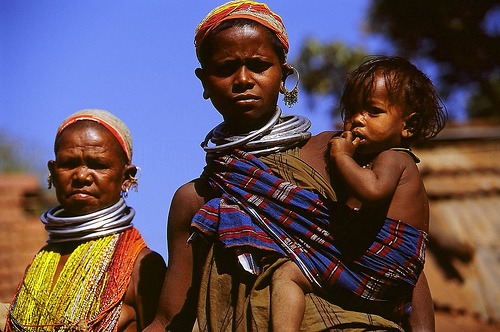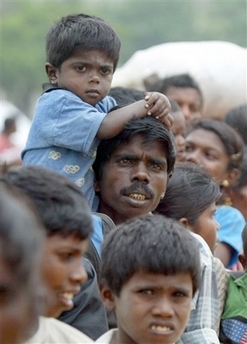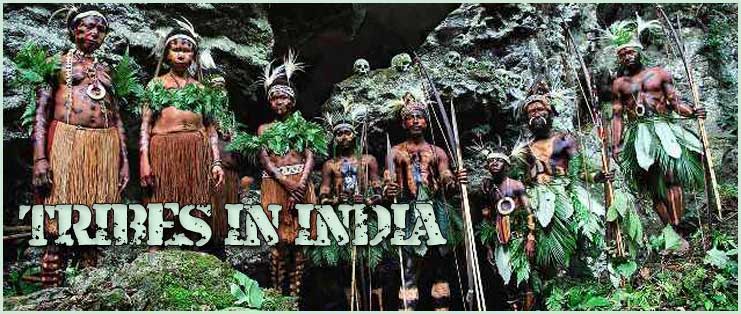The earliest known culture of the Neolithic times of the Indian subcontinent was the Indus Valley Culture,an urban civilization best exemplified by Harappa and Mohenjo daro in Sindh along the now extinct Sarasvati river basin. According to the Mainstream Science the IVC existed as far back as 3500 bc though some estimates go as far back as 9500 bc.
These 2 towns had numerous kiln fired brick buildings, a water and sewerage system and many large buildings thought to be for the public good such as granaries,colleges and public baths indicating a highly advanced lifestyle similar to Mesopotamia.
Himalayan earthquakes blocked the source of the Sarasvati and the culture died about 1800 bc.
The IVC or Harappan Civilization was dated to roughly 5 kya and extended to the borders of contemporary Sumeria,which isn't surprising when the craniometrics are examined. B.K Chatterjee and G.D Kumar identified 18 skeletal remains as
Veddoid/Proto Australoid which compared closely to skulls found in
Egypt,Palestine,Sumer and other parts of Asia.
http://books.google.co.ke/books?id=Q9ryY7N...ans&f=false
Fyi,Veddoid,Australoid,Melanasian,Polynesian are simply Mainstream code for African types.
B B Lal ,another respected researcher unequivocally
identified the Harappan megaliths and black and red ware as being Nubian
in origin. H N Singh says the pottery began in Nubia and spread through
Iran and Mesopotamia before reaching India.
It has been found that the Sumerian language is an Austric language
spoken by a group of ancient Australoid people found in India, South
East Asia and Australia (The Austric Origin of the Sumerian Language,
Language Form, vol. 22, no.1-2, Jan.-Dec. 1996.). An examination of
ancient Sumerian skulls has further confirmed that the ancient Sumerians
indeed belonged to the Australoid race. An evolved branch of the same
tribe appears to have established the Indus civilization as well as the
Sumerian one after the submergence of their coastal cities.
http://EzineArticles.com/313482
There exist strong language affinities with the Harappan descendants,the Tamil/Dravidian and W.Africans:
Since then, the idea of kinship between the Dravidian Languages and
certain Negro - African languages had become dear to her heart. That is
why she began to study in succession the Senegalese-Guinean (or
Sudano..Sahelian) languages, Mande (another Sudano - Sahelian family of
languages), Bantu (an East African family of languages) comparing them
with the Dravidian languages. This is what led her to publish, in 1950,
and 1951, in the “Journal de la societe des Africanistes”, Paris, the
following two articles in turn: “Dravidian elements in Peul” and “Telegu
and the Mande dialects”
Here is expert opinion on the lexical connection of Dravidian languages and Wolof concerning nominals and morphemes.......The origins of this culture circle are part ticularly complex. The
prominent feature is its links with the great states which are found on the
same latitude throughout Sudan; beside that, there are visible relationships
between this group of elements and the ancient eastern civilisations of Arabia,
Syria, Mesopotamia and mainly Inda (of ~les Peuples et las Civilisatjons de I’
Afrique’, Paris, 1948).
http://arutkural.tripod.com/tolcampus/drav-african2.html
A knowledgeable Tamil scholar Aravanan. Aravaanan (1980) has
written extensively on the African and Dravidian relations. He has
illustrated that the Africans and Dravidian share many physical
similarities including the dolichocephalic indexes (Aravaanan
1980,pp.62-263; Raceand History.com,2006), platyrrhine nasal index
(Aravaanan 1980,pp.25-27), stature (31-32) and blood type (Aravaanan
1980,34-35; RaceandHistory.com,2006). Aravaanan (1980,p.40) also
presented much evidence for analogous African and Dravidian cultural
features including the chipping of incisor teeth and the use of the lost
wax process to make bronze works of arts (Aravaanan 1980,p.41).
There
are also similarities between the Dravidian and African religions. For
example, both groups held a common interest in the cult of the Serpent
and believed in a Supreme God, who lived in a place of peace and
tranquility ( Thundy, p.87; J.T. Cornelius,"Are Dravidians Dynastic
Egyptians", Trans. of the Archaeological Society of South India
1951-1957, pp.90-117; and U.P. Upadhyaya, "Dravidian and Negro-African",
International Journal of Dravidian Linguistics 5, no.1) .
There
are also affinities between the names of many gods including Amun/Amma
and Murugan . Murugan the Dravidian god of the mountains parallels a
common god in East Africa worshipped by 25 ethnic groups is called
Murungu, the god who resides in the mountains
For the reader who hasn't seen Tamils,judge for yourself if there exists any African phenotype. Along with Australoids classified as Aboriginals they've been on the losing end of history ever since the invading Aryans destroyed IVC around 1700bc.
Ancient genetic flow strongly supports the evidence. A study discovered though Indians are related to what is known as the east Eurasian genepool, their clusters 1 ,11,VII,IX,XII AND XIV which spread from the ME originated in Africa.
http://www.academia.edu/341049/Origin_and_Spread_of_Dravidian_Speakers
So gentle reader,early Arabia,Mesopotamia,Sumeria,Iran and the Indian subcontinent were extensions of Africa.
There are still nearly pure Africoid populations
Chenchu hunter gatherers of Andhra Pradesh
Part 1
http://karanjazplace.blogspot.com/2012/09/the-secret-histories-of-black-people.html
Further information:
Research is an endless process. The researcher therefore continually searches for data confirming his hypothesis. Upon finding such data diligence demands the data must first be validated by neutral parties-after which it may be accepted in addition to the extant body of knowledge.
Here is the Ethiopian geez scr
Sanskrit /nagari
Incidentally this isn't new information. It was known over a century ago. Sir William Jones discovered the 2 scripts were identical-however it remained hidden in obscure specialist publications known only to an elite few while the public believed Africa had now writing and those better informed believed geez was influenced by nagari.
The redoubtable Clyde Winters elaborates: Today Eurocentric scholars teach that theIndians taught writing to the
Ethiopians, yet the name Nagari for Sanskritbetrays the Ethiopia origin
of this form of writing. Moreover, it is interesting to note that
Sanskrit vowels: a,aa,',I,u,e,o, virama etc., are in the same order as Geez.
The
Indian Ethiopians called Naga, made one important improvement over the
Ethiopic alphabetic scripts. This improvement was the addition of vowels
to the alphabet.
The major contribution to the Ethiopian Nagas
was the Indian writing system called Deva-Nagari. Nagari is the name for
the Sanskrit writing system. Over a hundred years ago Sir William
Jones, pointed out that Ge'ez and Sanskrit writing are one and the same.
He explained that this was supported by the fact that both writing
systems went from left to right, Sanskrit and Ge'ez share udentical
vowels in the same order, and the vowels were annexed to the consonants.
http://bafsudralam.blogspot.com/2009/01/geez-origin-of-devanagari-writing-of.html
Also fresh evidence of the African roots of Tamil language has been found.
http://www.youtube.com/watch?v=vWyAYGlFZjk
The uploader ,himself a Tamil proves numerous similarities between bantu speaking Cameroonians and Tamil.
India has 2 great national epics the Ramayana and Mahabharata. These ancient Sanskrit tales are part adventure story/philosophical and moral treatises told through protagonists involved in war,love and all the endeavours of the human condition. These genuinely fascinating chronicles are packed with high technology about test tube babies,aircraft, scalar interferometry,mass temperature inversion and what appear to be accounts of nuclear warfare.
The hero of the Mahabharata,Krishna,worshiped as the supreme personality of godhead by Hindus,a powerful incarnation of Vishnu was a real life historical figure thought to have been born roughly 3100 bc.
He was leader,lover,philosopher,protector and friend of all. His statue is a faithful rendition of India's population at this time.
Obviously he was of the Indian Africoid population,the
original inhabitants of the subcontinent. Many say the Mahabharata is
also the tale of a real race war wherein Krishna protected his fellow Africoids from the invading Caucasoids.
There may be element of truth in this theory but given the immense
age of Dwarka,known as the home of his Yadav clan thought to have been first built at least 50,000 years
ago and to have previously sunk 5 times,he could've been nothing but a
black African.
His name means 'black' though many say his true colour is blue!
The sunken city of Dwarka lies just off the beach in the bay of Khambatta in Gujarat state.
The page will be updated as and when any new data is confirmed.

























